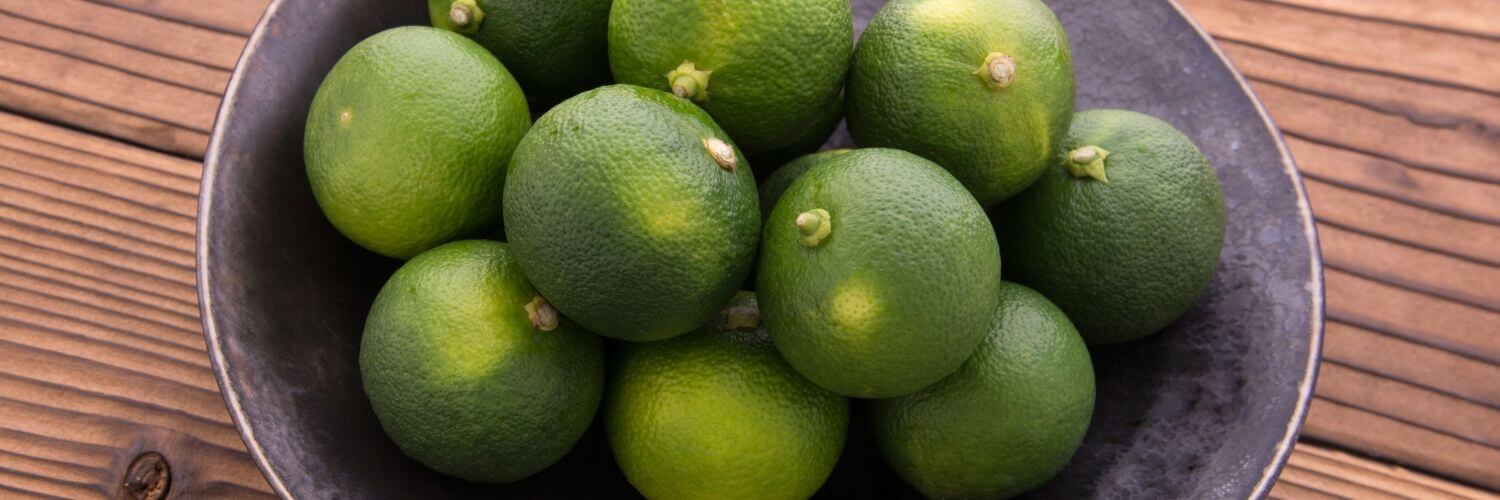
Sudachi is a citrus fruit native to Japan and can add fantastic fragrance and flavor to a wide variety of dishes, both savory and sweet.
The world of citrus is quite diverse, with many oranges, lemons, and limes all available in the United States. Journey a little farther, such as Japan, and you’ll discover a whole other world of citrus fruits. One example is a citrus fruit called sudachi , which closely resembles a lime. It is a variety of lime and citrus fruit native to the Tokushima prefecture in Japan. Sudachi is a mutated variety of the yuzu, another prevalent citrus fruit in Japan. Others believe that it is a combination of a mandarin and an ancient citrus variety called a papeda. Regardless, they were once relatively rare, used only in luxury restaurants. But the fruits are produced in much greater numbers today and can be found all year-round in Japan.
How Does Sudachi Look and Taste?
The sudachi limes can easily be mistaken for limes commonly found in the United States, although sudachi limes are significantly smaller, about the size of a golf ball. Kabosu, another type of lime citrus produced in Japan, is larger, and regular limes are the largest of the three.
There is also a difference in color between sudachi and other limes. The sudachi is harvested when the skin is a deep green, but the skin turns a bright yellow as the fruit ripens. It is much easier to tell the difference between a ripe sudachi and a regular lime at that stage. However, the juice of the sudachi is best when it is taken while the fruit is still green.
Sudachi limes are also heavier than regular limes because they have a much higher juice content. Sudachi juice is quite refreshing, though it still contains sour notes, just like regular limes. You can use the flavor and fragrance of sudachi juice to complement many dishes. Also, just like soy sauce, you only need a small amount of juice to enhance a dish greatly.
Health Benefits
Like most citrus, sudachi is high in Vitamin C. The skin and juice also contain potassium. The skin itself is rich in an abundance of additional vitamins and nutrients, including Vitamin A, calcium, Vitamin E, iron, magnesium, and dietary fiber. And, the tiny fruit even has more citric acid than a lemon. Altogether, these vitamins and nutrients deliver a strong punch of antioxidants.
The locals who enjoy the fruit regularly also tout its potential benefits of reducing fatigue, regulating blood sugar, and aiding in calcium absorption. When part of a regular diet, it can help boost the immune system, improve blood circulation, and reduce inflammation.
Where to Find
While finding fresh sudachi in the United States might be difficult, you can still enjoy it by ordering KANKITSU LABO 100% Pure Japanese Sudachi Extract online. This beautifully designed bottle of sudachi juice is all you need to enhance many dishes such as grilled fish or chicken, sashimi, fried chicken, noodle dishes, ceviche, and many fusion dishes that typically use lime juice or soy sauce. The pure sudachi juice perfectly captures the flavor and aroma of sudachi and contains no additives, colorings, or preservatives.
How to Use Sudachi Juice
The juice of the sudachi has a multitude of culinary applications. It can be used in place of soy sauce, lime juice, or vinegar. You can also incorporated it into sauces, salad dressings, dipping sauces, and marinades for everything from fish to soba noodles. The juice is also ideal for many different desserts, such as cakes, ice cream, and pastry fillings.
Of course, it can be a great addition to cocktails, or non-alcoholic drinks such as seltzer, for a delicious and refreshing flavored soda without added sugar. In Tokushima, it is easy to find juices, cider, and wines made from sudachi limes.
How to Use Sudachi Fruit
If you are lucky enough to find sudachi limes at an Asian supermarket, you can use the zest of the whole fruit in other dishes as well. For starters, you can make a delicious marmalade from the zest and pith, which already contain a high amount of pectin.
It is becoming increasingly popular in Japan to serve various noodle dishes with a few thinly sliced sudachi limes on top. Or, you can grate the zest onto soups and other dishes. They will stay fresh for up to two weeks in the refrigerator, and you can store the juice and zest in the freezer for as long as you need.
